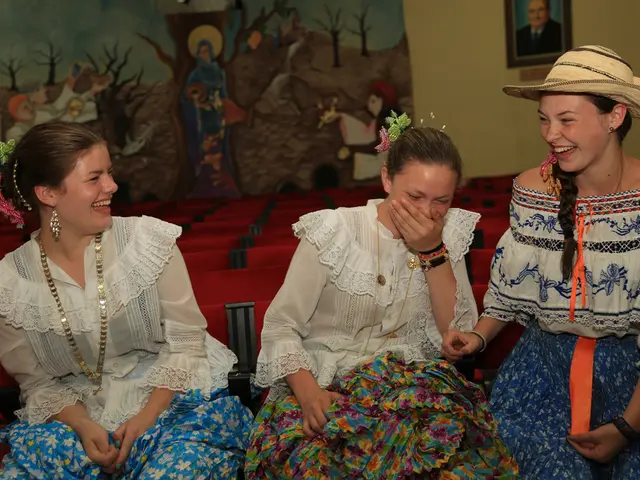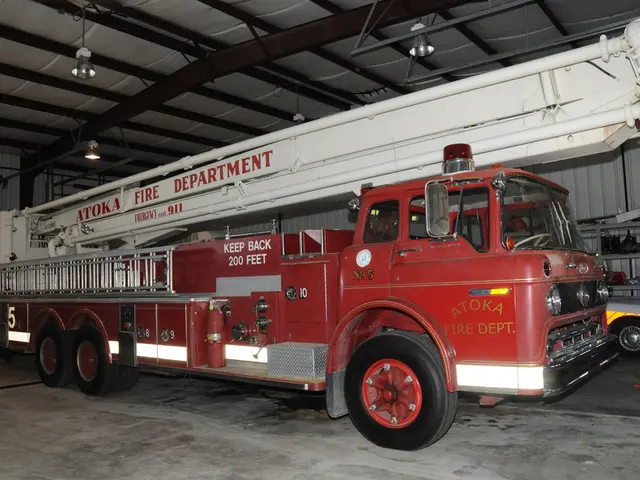Master the Strumming Artistry: Gaining Insights from Six Legendary Blues and Jazz Guitar Masters
Gettin' Down with the Blues and Jazz Legends is all about vibes and soundscapes. These iconic guitarists from the '30s to the '40s paved the way for the captivating guitar music we relish today. Each maestro carried their own distinctive touch and persona, creating unforgettable solos that stood out like a sore thumb (in a good way, obvs).
Blues is as much about emotions as it is about melody, a shared language that took shape through the mesmerizing fusion of African spirituals with European folk music. It's this approach of blending unique ideas that marks the vintage blues style – the magical collision of raw, heart-stirring blues sensibilities with sophisticated, smoother jazz elements.
Let's dive into the tales of six legendary guitarists, exploring how they mastered this beautifully intricate blend of feelings and techniques.
- Charlie Christian Charlie Christian was the Swing King of the pre-bop era, revolutionizing the electric guitar's place in the Jazz world. At just 25, his playing style was already marked by jazz maturity, featuring essential hot jazz vocabulary and an unbeatable swing. He played with a confident, bold tone, often sounding like a horn player rather than a guitarist.
Charlie's solos featured a handful of simple shapes, which he would embellish with extensions like the 6, b7, 9, and even the b3 from the minor pentatonic scale. Sprinkle in some chromatic passing notes and focusing on major 3rd enclosures, and you'll be grooving through the changes for any 12-bar blues in G.
- T-Bone Walker T-Bone Walker lived style, panache, and oodles of energy. His licks could range from downright filthy to delicate clusters of pure jazz sophistication. T-Bone's biting, twangy tone was one-of-a-kind in a time dominated by warmer sounds.
For that gritty T-Bone feel, make sure to pick right next to the bridge and under-do those string bends for an authentic sound. Stick mostly with the G minor blues scale (G Bb C Db D F – G minor pentatonic with the addition of the b5), and graduate to the major 3rd (B note) for some harmonic finesse.
- B.B. King B.B. King played the guitar like he sang – with emotion, grace, and finesse. His control over dynamics, touch, and vibrato was unmatched, making each note feel like a powerhouse of emotion. B.B.'s ability to use the guitar as a second voice to respond to his vocals set him apart.
Carry on B.B.'s legacy by blending portions of the major and minor pentatonic scales, leaving room to let the music breathe. Get your finger vibratos in gear for some dynamic playing, whispering some notes and shouting others when needed.
- Grant Green Grant Green was the perfect fusion of blues and jazz, taking the best from both worlds to craft an innovative musical voice. His playing relied heavily on the minor pentatonic and blues scales, but he also threw in some bebop II-V licks to keep things interesting.
Start with one of Grant Green's signature tricks: major and minor pentatonic scale double stops. Remember to keep your fourth finger anchored down on the root note, maintaining a clear, bell-like ring. For the V chord (D7) of G major, break out the chromaticism and the #5 courtesy of a D augmented triad (D F# A#/Bb).
- Wes Montgomery For many, Wes Montgomery picked up where Charlie Christian left off, bringing a wealth of new, sophisticated bebop vocabulary to the blues. He had the silkiest tone you ever heard,solos that could go from complex to simple with ease.
Get a Wes Montgomery vibe by mastering octave blues scale licks. Don't forget to mute any unwanted notes and get fancy on the D7 chord with an altered line boasting the #9, b9, and #5 extensions – popular exotic, jazzy notes.
- George Benson George Benson opened a new era of blues-inspired jazz, showcasing his stellar technique, groove chops, and songwriting skills. His ability to compose memorable lines while scaling complex jazz chord progressions made him a true pioneer.
End your journey with this final example, infused with jazzferocity. It begins with upper extension notes during the D7 chord, courtesy of a Cmaj7 arpeggio (C E G B). Lower that intensity and return to a G minor blues scale (G Bb C Db D F), employing some quick hammer-ons and pull-offs to the b5 (-b5 and back). Finish strong with a couple of choice jazz chord voicings – a rootless D9 and a 3rd inversion (b7 is the lowest note, typically an F note) of G13.
Rule the guitar like a boss with this legendary playbook. Practicing the techniques of these master musicians will bring you one step closer to unlocking your ultimate potential as a player. Good luck!
- Charlie Christian, a prodigy of the pre-bop era, revolutionized the electric guitar in jazz with his mature style that incorporated hot jazz vocabulary and an unbeatable swing. His solos often incorporated extensions like the 6, b7, 9, and the b3 from the minor pentatonic scale.
- T-Bone Walker showcased a unique blend of raw blues sensibilities and jazz sophistication. For T-Bone's gritty tone, it's best to pick right next to the bridge and under-do those string bends for an authentic sound. Stick mostly with the G minor blues scale with the addition of the b5, and graduate to the major 3rd for some harmonic finesse.
- B.B. King played the guitar like a second voice, bridging his vocals with emotional grace and finesse. To carry on his legacy, blend portions of the major and minor pentatonic scales, and focus on mastering dynamics, touch, and vibrato for a powerhouse of emotion.
- Grant Green was renowned for his fusion of blues and jazz, relying on the minor pentatonic and blues scales while incorporating bebop II-V licks. Start with one of his signature tricks: major and minor pentatonic scale double-stops. For the V chord of G major, break out the chromaticism and the #5 courtesy of a D augmented triad.
- Wes Montgomery, a leading figure in jazz, brought a wealth of bebop vocabulary to the blues. Get a Montgomery vibe by mastering octave blues scale licks and incorporating popular exotic, jazzy notes like the #9, b9, and #5 extensions. For a final example, start with upper extension notes during the D7 chord, followed by a return to the G minor blues scale and finishing with a couple of choice jazz chord voicings.







